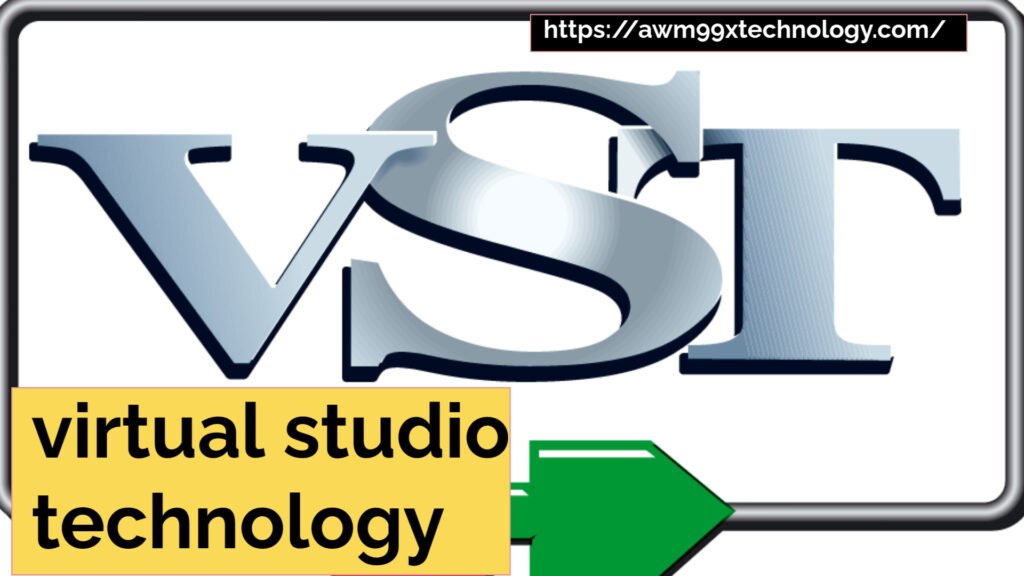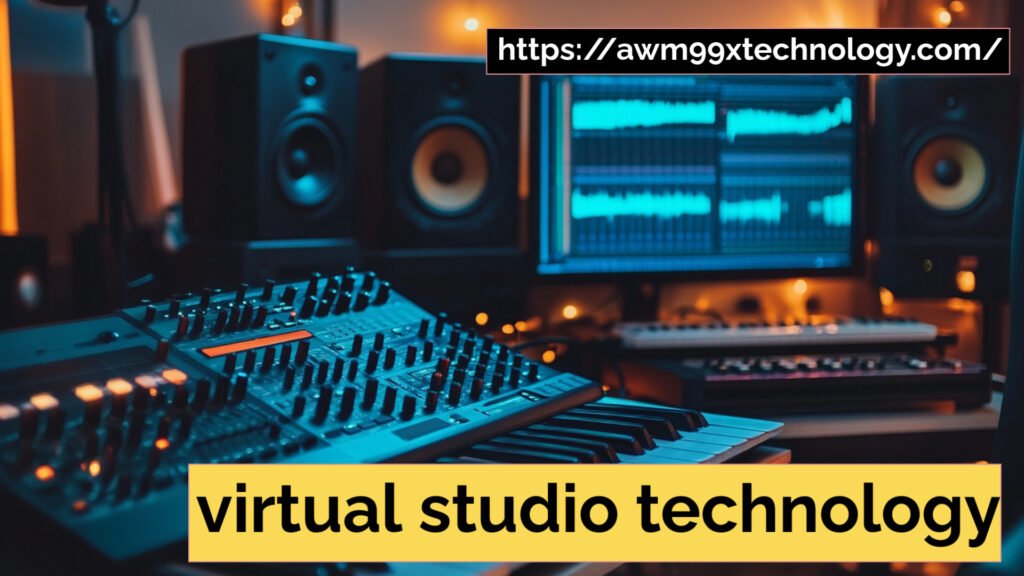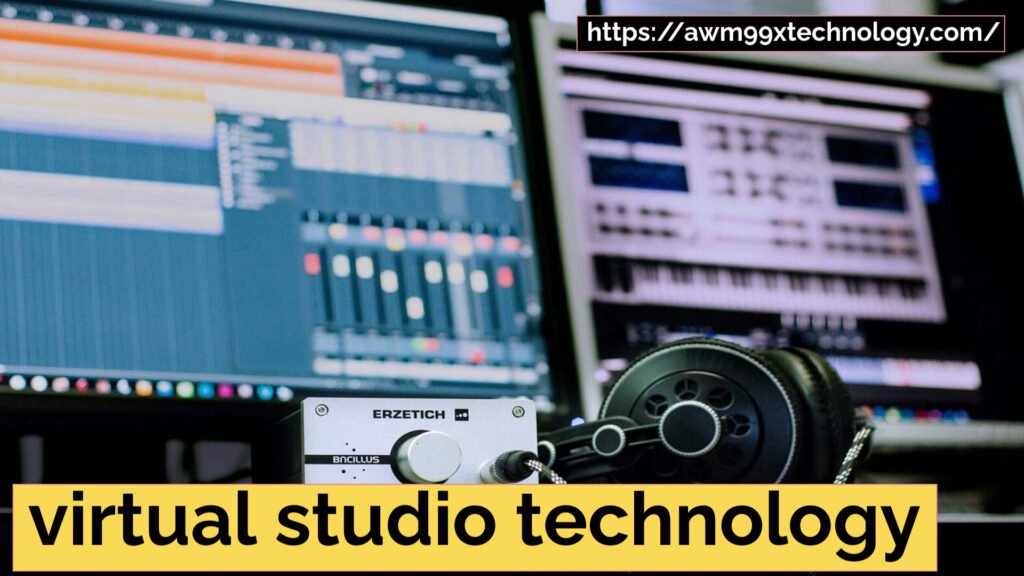Table of contents
- Introduction
- Key Points:
- Key Points on Virtual Studio Technology
- Virtual Studio Technology (VST) – What is this?
- Types of virtual studio technology Plugins
- Beginner virtual studio technology Plugin – Features
- Popular VST Plugins for Beginners
- Grouping incompatibility between vST plugins
- Key Terms Related to VST Plugins and Audio Production
- FAQ
- What is the difference between VST, VST2, and VST3?
- Are VST plugins Supported by Every DAW?
- How do I install VST plugins in my DAW?
- Conclusion
Introduction
At this point Virtual Studio Technology (VST) has a place of almost reverent status in current-day digital music creation. So, If you are a beginner in music production or audio engineering this guide can precisely show you what VST is and how it could unlock tons of possibilities for your creative projects. VST technology has transformed the way music producers, audio engineers, and sound designers create with their digital audio workstations.

Key Points:
VST is short for Virtual Studio Technology, which is a plugin format that lets software add audio effects and virtual instruments to Digital Audio Workstations (DAWs).
Music Production Usage: VST plugins extend the sound palette available in DAWs, and also provide the means for thousands of producers (both amateurs & pros) to be able to make a living through audio production.
VST Versions: VST has undergone several advancements from its original version, with current iterations exemplified in VST2 and VST3 Consequently, these updates have added to the power and flexibility of VST plugins.
VST is a term that a beginner really needs to understand one way or another because it is something, at least in the music production arena of VST either stand for Virtual Studio Technology.
Key Points on Virtual Studio Technology
What is a VST (Virtual Studio Technology)?
This article aims to give beginners an overview of the VST format and its significance in music production.
How VST Plugins Work in a DAW
How VST plugins are used for DAWs, what they do, and why we need them.
Types of VST Plugins
VST instrument vs VST effect — and what each is for
Popular VST plugins for newcomers
An overview of common and newbie-friendly VSTs
Virtual Studio Technology (VST) – What is this?
Definition:
VST (which stands for Virtual Studio Technology) is a plugin standard introduced by Steinberg in 1996. This enables third-party applications (including audio effects, synthesizers, and other virtual instruments) to plug directly into Digital Audio Workstations (DAWs).
Role in Music Production:
VST plugins help us create, modify and process audio within a DAW. Whether you are applying an effect to a track, to synthesize a new sound, or mixing and mastering VSTs has all the tools needed for production-ready audio creation.
Key Benefits for Beginners:
VST plugins give simple access to top-notch sound impacts and instruments without requiring touchy equipment.
This enables music producers to explore various sounds and styles with complete versatility.
VST is a revolutionary tool in the music production industry that allows users to replicate physical instruments and effects within their DAW, drastically improving workflow and creativity.

How virtual studio technology Plugins Work in a DAW
Plugin Integration:
VST plugins integrate into your DAW simply as virtual instruments or audio effects These plugins “reside” in the DAW ecosystem and are controlled instantly from within the DAW interface. A VST interacts with the digital audio signals of its host project when it is loaded, creating other sounds from scratch (as a virtual instrument does) or processing existing sounds (as an audio effect does).
VST Plugin Installation:
VST plugins are usually easy to install. From the other hand, a lot of plugins offer their own installer which conveniently drops the plugin files into an appropriate folder within your DAW. After that, you can just add them to your projects.
VST Plugin Compatibility:
VST plugins are supported by most of the modern DAWs. But do be sure to check, VST2 or VST3 supported by your DAW. VST2 still supports many older plugins whereas VST3 is a newer more up to date format.
Types of virtual studio technology Plugins
VST Instruments:
What Are They?:
VST instruments — plugins that let you make sound. Virtual Synths, Drum Machines, Samplers and many others. They let music producers build melodies, basslines, and other musical elements from the DAW itself.
Examples:
Some VST instrument plugins you may have heard of are Native Instruments Kontakt, Serum by Xfer Records and Massive.
VST Effects:
What Are They?:
VST effects are capable of changing the sound already laid down in a project. These may be EQs, reverbs, delays, compressors & more. They provide some indispensable mixing and mastering weapons.
Examples:
These include popular VST effect plugins, like Waves Audio Plugins, FabFilter Pro-Q, and Valhalla Reverb.
Beginner virtual studio technology Plugin – Features
Ease of Use:
virtual studio technology plugins often have good user interfaces; many are fairly simple in nature, and beginners can find them accessible. Whether it be a VST instrument or an effect most of the time you can achieve professional sounds with very little effort.
Variety of Sounds:
VST plugins offer a large number of sounds, from traditional instruments to synth sounds for advanced music producers.
Real-Time Audio Processing:
VSTs operate with real-time processes, meaning they can be used on live signals–producers use VSTs to add effects and manipulate sounds in the moment, transmitting audio while it’s being played.
Popular VST Plugins for Beginners
In this article, I will share some of the virtual studio technology plugins that a beginner music producer could find useful.
Synthesizers:
Xfer Serum: An amazing synth plugin with great sound design features and very intuitive UI.
TAL-Noisemaker (free) – A perfect synth for beginners that can easily make classic analog sounds
Effects:
Valhalla Supermassive: A simple and free reverb/delay plugin, great for ambience.
Another beginner mastering plugin that we recommend is iZotope Ozone Elements, a more basic version of iZotope’s full mastering suite with all of the key components for getting those tracks ready to go.
Drum Machines:
MT Power Drum Kit 2: Free, simple but effective drum kit plugin suitable for rock, pop sees well-packed powerful sounds.

Grouping incompatibility between vST plugins
VST Versions:
There are stair steps of VST plugins, the most common being VST2 and VST3. VST3 is the newest version, and it’s an improvement to VST2 that provides better latency handling and parameter handling. VST3 better some DAWs or older man can give not support VST3, so founder a trouble, however.
Cross-DAW Compatibility:
virtual studio technology plugins are standardized enough to generally work across different DAWs, but the way each DAW manages plugins and routes them often varies slightly. Be sure your VST plugin version is compatible with the DAW of choice.
Key Terms Related to VST Plugins and Audio Production
| Term | Definition |
| VST Plugins | Software tools that add audio effects or virtual instruments to a DAW, enhancing its production capabilities. |
| VST2 | An older version of VST, with basic plugin support and features. |
| VST3 | The latest version of VST, featuring advanced routing, low-latency performance, and improved plugin management. |
| DAW | Digital Audio Workstation, the primary software used for recording, editing, and mixing music (e.g., Ableton, FL Studio). |
| VST Plugin Compatibility | The ability of a DAW to support different VST versions (VST2 or VST3) without causing errors or issues. |
| Audio Plugins | Plugins that modify or enhance audio signals, often used for mixing, mastering, and creating sounds. |
| Plugin Architecture | The underlying structure and coding that allows plugins to operate within a DAW. |
| Audio Effects | Plugins that alter the sound, such as reverb, EQ, and delay, to shape the final audio output. |
| VST Plugin Features | The key capabilities and functionalities of VST plugins, such as modulation, parameter control, and automation. |
| Low-Latency Plugins | Plugins designed to reduce delay or lag when processing audio, critical for real-time recording and mixing. |
| VST Plugin Performance | How efficiently and effectively a plugin operates within a DAW, affecting CPU usage and overall system stability. |
| VST Plugin Development | The process of creating custom VST plugins, often involving coding and understanding DAW integration. |
| VST Plugin System | The framework within a DAW that handles plugin integration, management, and communication with the audio engine. |
| Plugin Routing | The way audio and MIDI data are directed to and from VST plugins within a DAW, influencing sound processing. |
| Virtual Instruments | VST plugins that generate sounds (e.g., synthesizers, drum machines) rather than modifying existing audio. |
| VST Plugin Compatibility Issues | Potential problems that arise when using older VST plugins in newer DAWs, especially between VST2 and VST3. |
| VST Plugin Interface | The visual and interactive elements of a VST plugin that users manipulate to modify sound and parameters. |
| Plugin Optimization | Techniques to improve a plugin’s performance and reduce its impact on CPU resources and system stability. |

FAQ
What is the difference between VST, VST2, and VST3?
VST (Virtual Studio Technology) is the original plug-in format designed by Steinberg for adding audio effects and virtual instruments to DAWs.
While VST2 already made many improvements over the previous (at the time) standard, still talking only about original VST plugins types.
The most recent version, VST3, comes with further advanced features including improved speeds and lower latency as well as more complex parameter management and routing capabilities for audio. VST3 contains numerous enhancements but remains backward-compatible with VST2.
Are VST plugins Supported by Every DAW?
While most modern DAWs support VST plugins, compatibility can vary depending on the version of the DAW and whether it supports a specific version of the VST plugin. Most DAWs such as Ableton Live, FL Studio and Logic Pro X supports VST2 plugins while VST3 support is becoming increasingly common among newer versions of these applications. Be aware that the version of the plugin you are using has to be compatible with your DAW.
How do I install VST plugins in my DAW?
VST plugins typically work by downloading the plugin and going through an installation process that puts it in place (pointing to the right folder, usually under “VST” in your DAW directory). Once installed, just open your DAW, go to the “plugins” and load that VST into your project. Most plugins will also include their own installers to simplify the process. Ensure you are downloading the proper version (VST2 or VST3) for your DAW.
ALSO READ THIS BLOG : THE WANDERING JEW PLANT: HOW IT GROWS, AND THE TECHNOLOGY INSIDE SMART CARE SYSTEMS
Conclusion
What you need to know about VST, if you are new on music production. No matter if your DAW is geared towards producing electronic music, recording instruments or mixing and mastering your tracks – VST plugins add vital tools to your musical toolbox that not only make writing a blast but also streamline the workflow.
There are VST plugins for both synths and effects, and as a beginner, you need to learn how to use these in your DAW type tools: instruments and effects; how they all work is something you’ll need to get familiar with. When you have the proper VST tools accessible to you, it could not matter how many years of making music underneath your belt; you’ll be able to start out making professional-sounding music.
With a little time spent experimentation with VSTs, you will soon be able to rule the world on digital music production.






